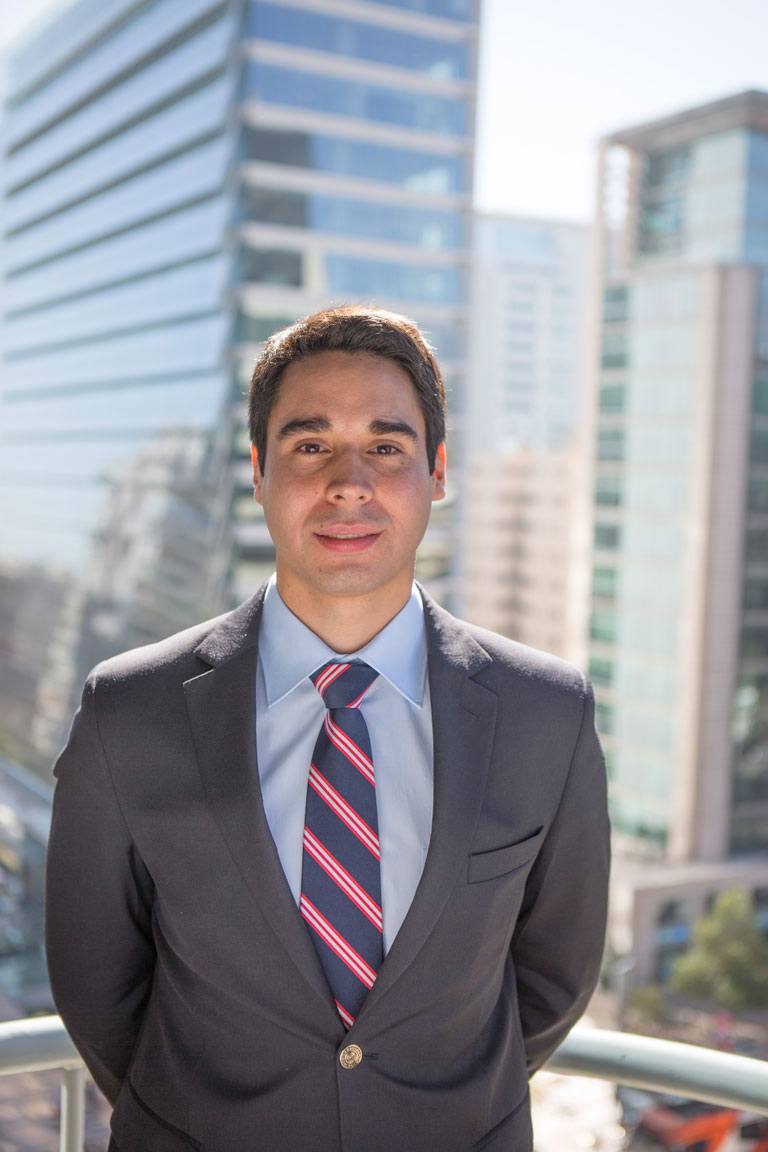Matías Valenzuela is a senior associate, biochemist, and leader of the Patent Department. His work focuses on patent protection strategies, especially those related to the chemical, pharmaceutical and biotechnological areas, both nationally and internationally. He also collaborates in the preparation of prior art search reports, patent drafting, F.T.O. reports, analysis, and responses to patentability objections.
AREAS OF PRACTICE
- Patent Protection Strategies.
- Invention Patents, Utility Models, Industrial Designs, Industrial Designs.
- Plant Varieties.
- State of the Art Searches, Patent Drafting, FTO, Comparative Analysis.
- Regulatory Law.
RECOGNITIONS
- IAM
- Leaders League
MEMBERSHIPS
- ASIPI (Interamerican Association of Industrial Property).
- INTA (International Trademark Association).
- IPO (Intellectual Property Owners).
- CEDIQUIFA.
- Red de Gestores Tecnológicos de Chile (GT Network).
- AIPLA (American Intellectual Property Law Association).
EDUCATION
- Degree in Biochemistry, Universidad Nacional Andrés Bello, Santiago, Chile. Graduated in 2012.
- Master’s degree in Biochemistry and professional title of Biochemist, Universidad Nacional Andrés Bello, Santiago, Chile (2014).
- Courses:
- Introduction to the Patent Cooperation Treaty. WIPO Academy (2016).
- Fundamental Aspects of Drafting Patent Applications. WIPO Academy (2016).
- Searching for Patent Information. WIPO Academy (2017).
- Advanced Patent Course. WIPO Academy (2018).
PROFESSIONAL EXPERIENCE
- 2013 – 2014, professor in charge of the Microbiology Laboratory course for the Nursing and Chemistry and Pharmacy careers, at the Universidad Nacional Andrés Bello.
- 2012 – 2014, research assistant in the FONDECYT project “Identification and analysis of pseudogenes involved in the evolutionary adaptation of Salmonella Typhi to the human host”.
- 2015, research assistant in the FONDECYT project “Loss of key functions drives Salmonella Typhi adaptation to human host”.
- He has collaborated in the publication of the following scientific articles appended to ISI journals: “Salmonella Typhi shdA: Pseudogene or Allelic Variant”, infection, genetics and evolution (2014); “Pseudogenization of sopA and sopE2 is functionally linked and contributes to virulence of Salmonella enterica serovar Typhi”, infection, genetics and evolution (2015); “S tg fimbrial operon from S. Typhi STH2370 contributes to association and cell disruption of epithelial and macrophage-like cells”, Biological research (2015); “Lose to win: marT pseudogenization in Salmonella enterica serovar Typhi contributed to the surV-dependent survival to H2O2, and inside human macrophage-like cells” infection, genetics and evolution (2016); and “Cysteine auxotrophy drives reduced susceptibility to quinolones and paraquat by inducing the expression of efflux-pump systems and detoxifying enzymes in S. Typhimurium” Biochemical and Biophysical Research Communications (2019).
LANGUAGES
- Spanish
- English

